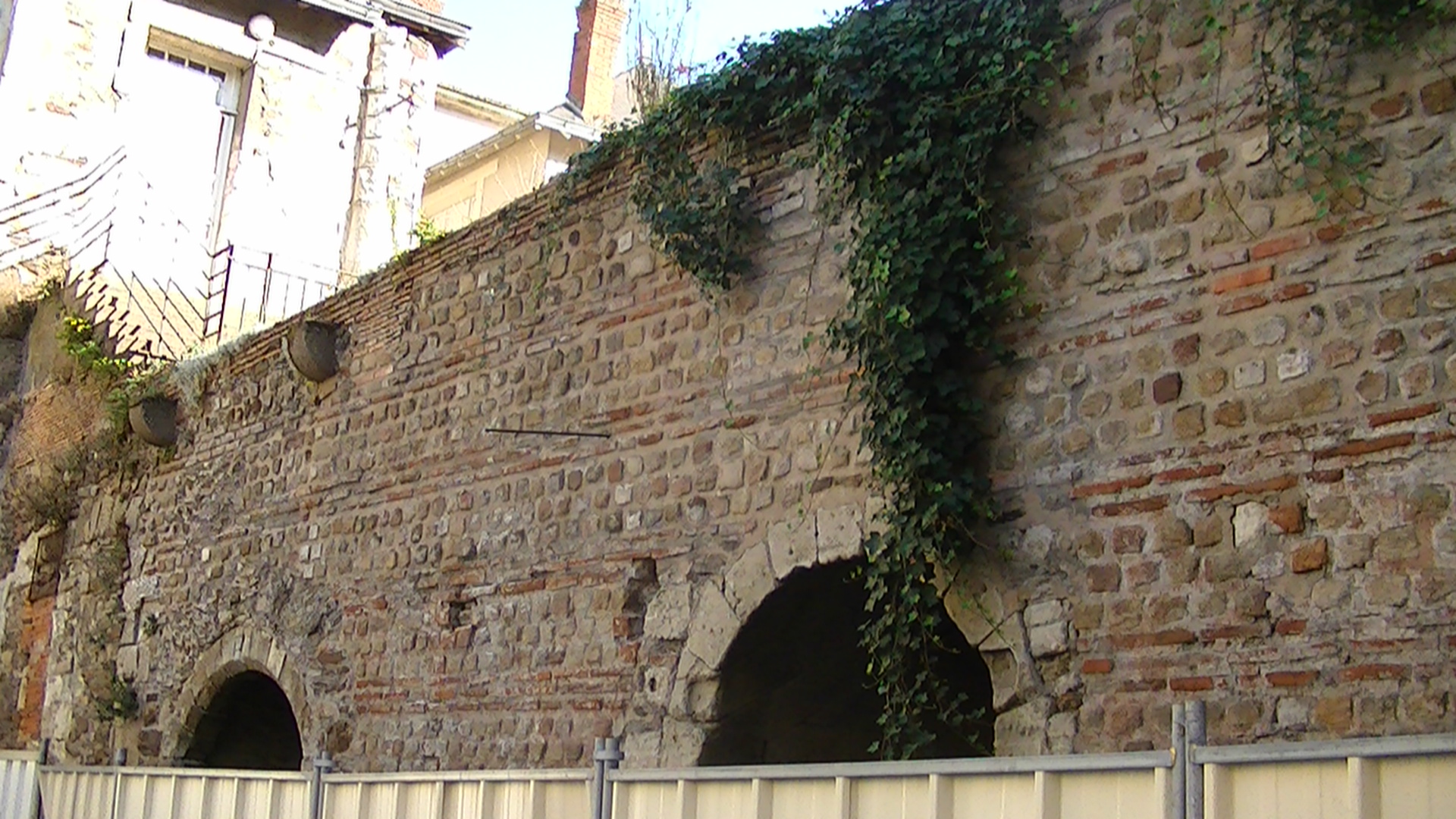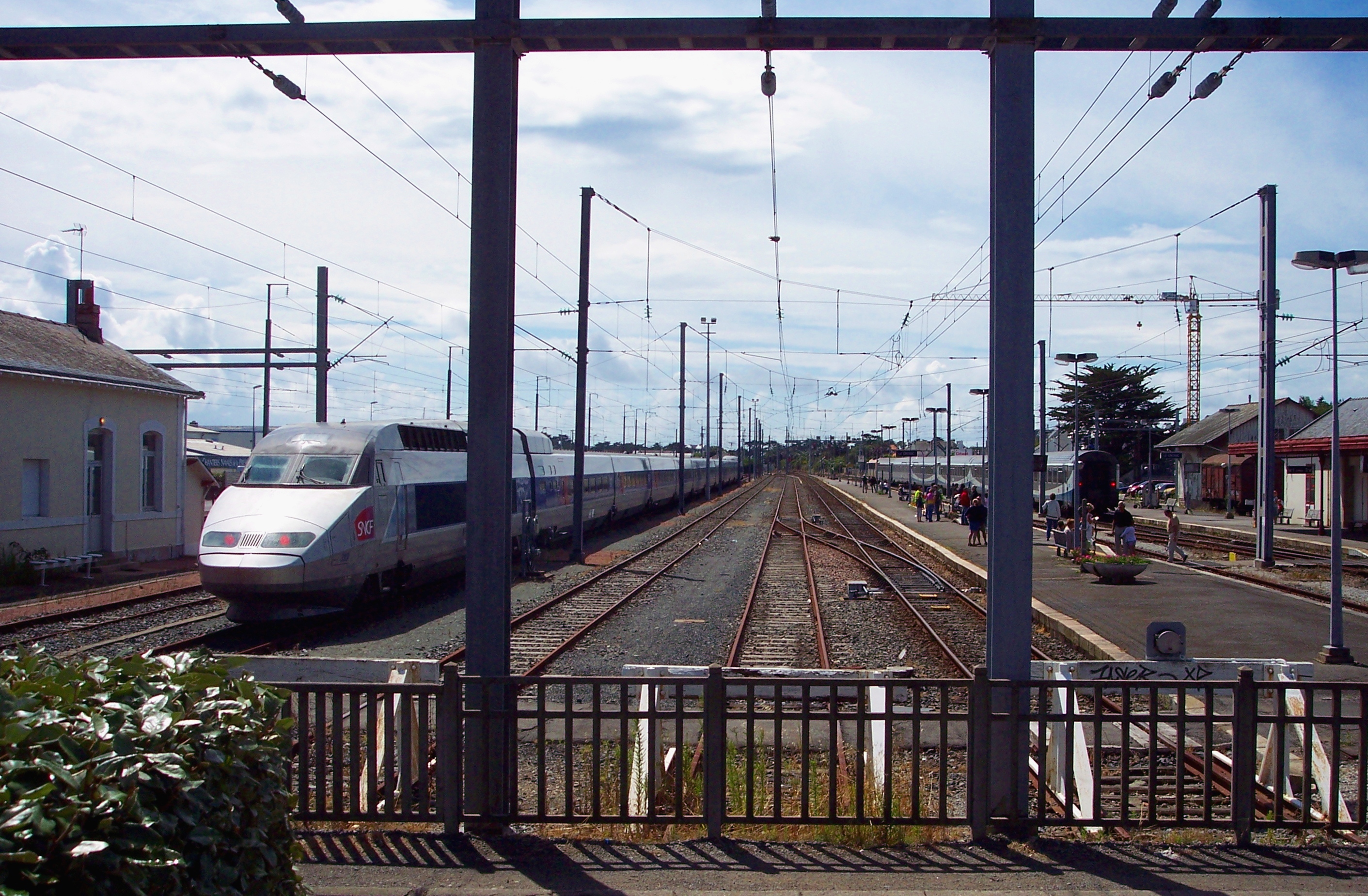|
Château De La Gaudinière
The Château de la Gaudinière is a château located in Nantes, in the Breil-Barberie district, France. History The Château de la Gaudinière was constructed in the 18th century. Before the French Revolution, it was owned by Louis Chaurand, a wealthy Nantes shipowner with connections to the Beauharnais and Tascher de la Pagerie families. In 1814, the château passed to the d'Aux family, then to the Perrien family. During the Restoration, it was acquired by the Goüin family, friends, and former neighbors of Balzac in Tours. The estate then included a main residence with a courtyard of honor, a chapel, an English-style garden with an orangery, an orchard with a pond, and a wooded area. It provided an ideal setting for a ''gentleman farmer'' interested in the emerging trend of ornamental gardens and exotic plants from the Americas, such as magnolias and bald cypresses. In 1857, the château and its park were purchased by banker J. Brousset, a relative of the Goüin family. ... [...More Info...] [...Related Items...] OR: [Wikipedia] [Google] [Baidu] |
Nantes
Nantes (, ; ; or ; ) is a city in the Loire-Atlantique department of France on the Loire, from the Atlantic Ocean, Atlantic coast. The city is the List of communes in France with over 20,000 inhabitants, sixth largest in France, with a population of 320,732 in Nantes proper and a metropolitan area of nearly 1 million inhabitants (2020). With Saint-Nazaire, a seaport on the Loire estuary, Nantes forms one of the main north-western French metropolitan agglomerations. It is the administrative seat of the Loire-Atlantique Departments of France, department and the Pays de la Loire Regions of France, region, one of 18 regions of France. Nantes belongs historically and culturally to Brittany, a former Duchy of Brittany, duchy and Province of Brittany, province, and Reunification of Brittany, its omission from the modern administrative region of Brittany is controversial. Nantes was identified during classical antiquity as a port on the Loire. It was the seat of a bishopric at the ... [...More Info...] [...Related Items...] OR: [Wikipedia] [Google] [Baidu] |
Erdre
The Erdre (; ) is a long river in western France, right tributary to the Loire. Its source is in the Maine-et-Loire '' department'', near La Pouëze. It flows through the ''departments'' Maine-et-Loire and Loire-Atlantique. The Erdre meets the Loire in the city of Nantes. Other towns on the Erdre, going downstream, are Candé, Riaillé Riaillé (; Gallo: ''Riâlhë'', ) is a commune in the Loire-Atlantique department in western France. Population See also *Communes of the Loire-Atlantique department The following is a list of the 207 communes of the Loire-Atlantique ..., Nort-sur-Erdre and Sucé-sur-Erdre. South of Nort-sur-Erdre, the river flows through reclaimed marshland, and is up to a kilometer wide at the Plaine de Mazerolles near Sucé-sur-Erdre. At the Plaine de la Poupiniere, the Nantes-Brest canal joins the Erdre. The Erdre flows into the Loire via the under , emerging near the main railway station. Its former course is a main road and shopping are ... [...More Info...] [...Related Items...] OR: [Wikipedia] [Google] [Baidu] |
19th-century Architecture
The 19th century began on 1 January 1801 (represented by the Roman numerals MDCCCI), and ended on 31 December 1900 (MCM). It was the 9th century of the 2nd millennium. It was characterized by vast social upheaval. Slavery was abolished in much of Europe and the Americas. The First Industrial Revolution, though it began in the late 18th century, expanded beyond its British homeland for the first time during the 19th century, particularly remaking the economies and societies of the Low Countries, France, the Rhineland, Northern Italy, and the Northeastern United States. A few decades later, the Second Industrial Revolution led to ever more massive urbanization and much higher levels of productivity, profit, and prosperity, a pattern that continued into the 20th century. The Catholic Church, in response to the growing influence and power of modernism, secularism and materialism, formed the First Vatican Council in the late 19th century to deal with such problems and con ... [...More Info...] [...Related Items...] OR: [Wikipedia] [Google] [Baidu] |
18th-century Architecture
The 18th century lasted from 1 January 1701 (represented by the Roman numerals MDCCI) to 31 December 1800 (MDCCC). During the 18th century, elements of Enlightenment thinking culminated in the Atlantic Revolutions. Revolutions began to challenge the legitimacy of monarchical and aristocratic power structures. The Industrial Revolution began mid-century, leading to radical changes in human society and the environment. The European colonization of the Americas and other parts of the world intensified and associated mass migrations of people grew in size as part of the Age of Sail. During the century, slave trading expanded across the shores of the Atlantic Ocean, while declining in Russia and China. Western historians have occasionally defined the 18th century otherwise for the purposes of their work. For example, the "short" 18th century may be defined as 1715–1789, denoting the period of time between the death of Louis XIV of France and the start of the French Revo ... [...More Info...] [...Related Items...] OR: [Wikipedia] [Google] [Baidu] |
English Landscape Garden
The English landscape garden, also called English landscape park or simply the English garden (, , , , ), is a style of "landscape" garden which emerged in England in the early 18th century, and spread across Europe, replacing the more formal, symmetrical French formal garden which had emerged in the 17th century as the principal gardening style of Europe. The English garden presented an idealized view of nature. Created and pioneered by William Kent and others, the "informal" garden style originated as a revolt against the architectural garden and drew inspiration from landscape paintings by Salvator Rosa, Claude Lorrain, and Nicolas Poussin, as well as from the classic Chinese gardens of the East, which had recently been described by European travellers and were realized in the Anglo-Chinese garden.Bris, Michel Le. 1981. ''Romantics and Romanticism.'' Skira/Rizzoli International Publications, Inc. New York 1981. 215 pp. age 17Tomam, Rolf, editor. 2000. ''Neoclassicism ... [...More Info...] [...Related Items...] OR: [Wikipedia] [Google] [Baidu] |
Châteaux Of The Loire Valley
The châteaux of the Loire Valley () are part of the architectural heritage of the historic towns of Amboise, Angers, Blois, Chinon, Montsoreau, Orléans, Saumur, and Tours along the river Loire in France. They illustrate Renaissance ideals of design in France. The châteaux of the Loire Valley number over three hundred, ranging from practical fortification, fortified castles from the 10th century to splendid residences built half a millennium later. When the French kings began constructing their huge châteaux in the Loire Valley, the nobility, drawn to the seat of power, followed suit, attracting the finest architects and landscape designers. The châteaux and their surrounding gardens are cultural monuments which embody the ideals of the Renaissance and The Enlightenment, Enlightenment. Many of the châteaux were built on hilltops, such as the Château d'Amboise, while the only one built in the riverbed is the Château de Montsoreau. Many had exquisite churches on the grounds or ... [...More Info...] [...Related Items...] OR: [Wikipedia] [Google] [Baidu] |
History Of Nantes
Nantes (, ; ; or ; ) is a city in the Loire-Atlantique department of France on the Loire, from the Atlantic Ocean, Atlantic coast. The city is the List of communes in France with over 20,000 inhabitants, sixth largest in France, with a population of 320,732 in Nantes proper and a metropolitan area of nearly 1 million inhabitants (2020). With Saint-Nazaire, a seaport on the Loire estuary, Nantes forms one of the main north-western French metropolitan agglomerations. It is the administrative seat of the Loire-Atlantique Departments of France, department and the Pays de la Loire Regions of France, region, one of 18 regions of France. Nantes belongs historically and culturally to Brittany, a former Duchy of Brittany, duchy and Province of Brittany, province, and Reunification of Brittany, its omission from the modern administrative region of Brittany is controversial. Nantes was identified during classical antiquity as a port on the Loire. It was the seat of a bishopric at the ... [...More Info...] [...Related Items...] OR: [Wikipedia] [Google] [Baidu] |
Cemeteries Of Nantes
The cemeteries of Nantes have each developed a unique history, with some being more notable than others. Each cemetery has its share of remarkable Domicile (law), inhabitants. Since 1979, at least fifteen cemeteries have been operational within the Communes of France, commune of Nantes (at least to some extent). The cemeteries of Nantes include Bouteillerie, Chauvinière, Cimetière Parc, Miséricorde, Pont du Cens, Saint-Clair, Saint-Donatien, Saint-Jacques, Saint-Joseph-de-Porterie, Saint-Martin (old and new), Sainte-Anne (old and new), Toutes-Aides, and Vieux-Doulon. The location of cemeteries has undergone a significant evolution over time, with a preference for sites both outside the city and close to places of worship, particularly Church (building), churches (on occasion, even within their confines). Many cemeteries, including those in Saint-Léonard, Seine-Maritime, Saint-Léonard, Champfleury, Aube, Chamfleury, and the Huguenots, have ceased to exist. The number, organiza ... [...More Info...] [...Related Items...] OR: [Wikipedia] [Google] [Baidu] |
Giant Sequoia
''Sequoiadendron giganteum'' (also known as the giant sequoia, giant redwood, Sierra redwood or Wellingtonia) is a species of coniferous tree, classified in the family Cupressaceae in the subfamily Sequoioideae. Giant sequoia specimens are the largest trees on Earth. They are native to the groves on the western slopes of the Sierra Nevada (U.S.), Sierra Nevada mountain range of California but have been introduced, planted, and grown around the world. The giant sequoia is listed as an endangered species by the International Union for Conservation of Nature, IUCN with fewer than 80,000 remaining in its native California. The tree was introduced to the U.K. in 1853, and by now might have 500,000 trees growing there where it is more commonly known as Wellingtonia after the Duke of Wellington. The giant sequoia grow to an average height of 50–85 m (164–279 ft) with trunk diameters ranging from 6–8 m (20–26 ft). Record trees have been measured at 94.8 m (311&nbs ... [...More Info...] [...Related Items...] OR: [Wikipedia] [Google] [Baidu] |
Folly (architecture)
In architecture, a folly is a building constructed primarily for decoration, but suggesting through its appearance some other purpose, or of such extravagant appearance that it transcends the range of usual garden buildings. Eighteenth-century English landscape gardening and French landscape gardening often featured mock Roman temples, symbolising classical virtues. Other 18th-century garden follies imitated Chinese temples, Egyptian pyramids, ruined medieval castles, abbeys, or Tatar tents, to represent different continents or historical eras. Sometimes they represented rustic villages, mills and cottages, to symbolise rural virtues. Many follies, particularly during times of famine, such as the Great Famine (Ireland), Great Famine in Ireland, were built as a form of poor relief, to provide employment for peasants and unemployed artisans. In English, the term began as "a popular name for any costly structure considered to have shown wikt:folly#Noun, folly in the builder", t ... [...More Info...] [...Related Items...] OR: [Wikipedia] [Google] [Baidu] |
Loire-Atlantique
Loire-Atlantique (; Gallo language, Gallo: ''Louére-Atantique''; ; before 1957: ''Loire-Inférieure'', ) is a departments of France, department in Pays de la Loire on the west coast of France, named after the river Loire and the Atlantic Ocean. It had a population of 1,429,272 in 2019.Populations légales 2019: 44 Loire-Atlantique INSEE History Loire-Atlantique is one of the original 83 departments created during the French Revolution on March 4, 1790. Originally, it was named Loire-Inférieure, but its name was changed in March 9, 1957 to Loire-Atlantique. The area was formed from the Province of Brittany, and contains what many people still consider to be Brittany's capital, Nantes. However, during World War II, the Vichy Government set up a s ...[...More Info...] [...Related Items...] OR: [Wikipedia] [Google] [Baidu] |







